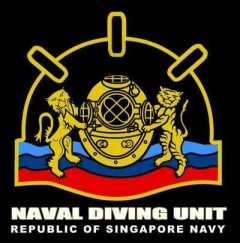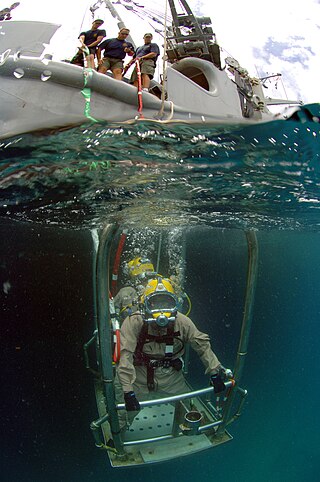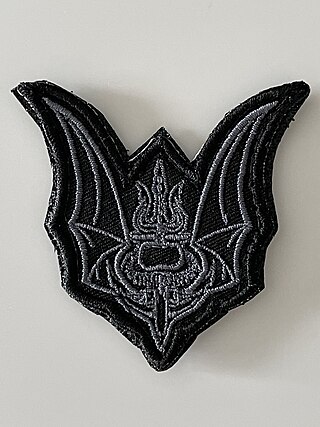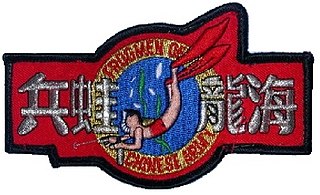
The United States Navy Sea, Air, and Land (SEAL) Teams, commonly known as Navy SEALs, are the U.S. Navy's primary special operations force and a component of the Naval Special Warfare Command. Among the SEALs' main functions are conducting small-unit special operation missions in maritime, jungle, urban, arctic, mountainous, and desert environments. SEALs are typically ordered to capture or kill high-level targets, or to gather intelligence behind enemy lines. SEAL team personnel are hand-selected, highly trained, and possess a high degree of proficiency in unconventional warfare (UW), direct action (DA), and special reconnaissance (SR), among other tasks like sabotage, demolition, intelligence gathering, and hydro-graphic reconnaissance, training, and advising friendly militaries or other forces. All active SEALs are members of the U.S. Navy.

A frogman is someone who is trained in scuba diving or swimming underwater in a tactical capacity that includes military, and in some European countries, police work. Such personnel are also known by the more formal names of combat diver, combatant diver, or combat swimmer. The word frogman first arose in the stage name the "Fearless Frogman" of Paul Boyton in the 1870s and later was claimed by John Spence, an enlisted member of the U.S. Navy and member of the OSS Maritime Unit, to have been applied to him while he was training in a green waterproof suit.

The United States Naval Special Warfare Command (USNSWC), also known as NAVSPECWARCOM and WARCOM, is the naval component of United States Special Operations Command, the unified command that oversees and conducts the nation's special operations and missions.

The diver insignia are qualification badges of the uniformed services of the United States which are awarded to servicemen qualified as divers. Originally, the diver insignia was a cloth patch decoration worn by United States Navy divers in the upper-portion of the enlisted service uniform's left sleeve during the first part of World War II, when the rating insignia was worn on the right sleeve. When enlisted rating insignia were shifted to the left sleeve in late World War II, the patch shifted to the upper right sleeve. The diving patch was created during World War II, and became a breast insignia in the late 1960s.

The Naval Diving Unit (NDU), also referred to as the Naval Divers, is the special forces formation of the Republic of Singapore Navy (RSN) responsible for conducting special operations from sea, air, and land. The formation is made up of six squadrons, specialising in explosive ordnance disposal, underwater demolition, maritime security operations, and combatant craft operations.

A clearance diver was originally a specialist naval diver who used explosives underwater to remove obstructions to make harbours and shipping channels safe to navigate, but the term "clearance diver" was later used to include other naval underwater work. Units of clearance divers were first formed during and after World War II to clear ports and harbours in the Mediterranean and Northern Europe of unexploded ordnance and shipwrecks and booby traps laid by the Germans.
Underwater demolition is the deliberate destruction or neutralization of man-made or natural underwater obstacles, both for military and civilian purposes.

The Russian commando frogmen, informally called "commando frogmen" in civilian media, are a Russian Naval Spetsnaz unit under operational subordination to the Main Intelligence Directorate (GRU). It is the special forces unit of the Russian Naval Infantry and is composed of highly trained and elite marines within the Naval Infantry. By virtue of belonging to the Russian Naval Infantry, frogmen fall under the Coastal Troops of the Russian Navy service arm. The Russian Navy proper does not field any special forces or special operations units. Russian FSB special forces Alpha Group and Vympel also have frogman units in their respective naval components.

The Kopaska is the premier frogman and underwater demolition unit of the Indonesian Navy. The unit's motto is Tan Hana Wighna Tan Sirna. The unit's main duties are underwater demolition, destroying main underwater installations, reconnaissance, prisoner snatches, preparing beaches for larger naval amphibious operations, and counter-terrorism. During peacetime, the unit also deploys a team to serve as security personnel for VIPs and VVIPs. The personnel of Kopaska are recruited from Indonesian Navy seamen. Like other Indonesian special forces, Kopaska is trained to be able to conduct operations in the sea, including underwater, on land and airborne.

The Special Warfare Group (SWG) is the primary special forces unit of the Republic of Singapore Navy (RSN) responsible for conducting special operations from sea, air, and land. It is one of six squadrons of the Naval Diving Unit (NDU).

Minedykkerkommandoen (MDK) or Norwegian Naval EOD Command is a clearance diver group. MDK is subordinate to the Royal Norwegian Navy. MDK is located at Haakonsvern Naval Base in Bergen and Ramsund Naval Base, in vicinity of Harstad.
The Divers Group is the Portuguese Navy's sapper clearance diver unit. It was created in 2004 through the grouping of the several already existing diving subunits, to exercise administrative, logistical and operational control and management, maritime special operations capable, over all diver units and personnel. It groups under a single command, all previously existing Sappers Divers Units and Services.
Canadian Armed Forces (CAF) divers are specialists trained to conduct underwater operations within their respective environmental commands. Divers within the CAF are qualified in sub-categories of diving: Clearance Divers, Search and Rescue Technicians (SRT), Port Inspection Divers (PID), Ship's Team Divers, and Combat Divers.

The US employs divers in several branches of the armed forces, including the navy, army, marines, air force and coast guard.

Combat Rescue Officer (CRO) is a Special Warfare Officer career field in the United States Air Force. Its Air Force Specialty Code (AFSC) is 19ZXC and it was created to strengthen USAF Special Warfare personnel recovery capabilities by providing commissioned officer leadership that possessed an operational skillset paralleling that of the enlisted pararescuemen (PJ). The CRO specialty includes direct combatant command and control of Combat Search and Rescue (CSAR) operations. They plan, manage and execute the six tasks of CSAR: prepare, report, locate, support, recover, and reintegrate isolated personnel and materiel. CROs conduct strategic, operational and tactical level planning, provide battle staff expertise, manage theater personnel recovery operations and conduct combat special operations.

The Special Task and Rescue Team, abbreviated as STAR, serves as the command for elite maritime special operations and underwater divers within the Malaysia Coast Guard. It was established as a rapid reaction force for emergencies within the maritime zone of Malaysia.

Army engineer divers are members of national armies who are trained to undertake tasks underwater, including reconnaissance, demolition, and salvage. These divers have similar skills and qualifications as professional divers. Army divers use both surface supplied "Hard hat" and SCUBA to perform their missions. In the United States Army, they are members of the Corps of Engineers. In the British Army, they may be Royal Engineer Divers or Commando Engineer Divers.

The United States Air Force Combat Diver Course—administratively known as the 350th Battlefield Airmen Training Squadron, Det 2—is held at the Navy Diving Salvage and Training Center, Naval Support Activity Panama City and trains Pararescuemen, Combat Rescue Officers, Combat Controllers, and Special Tactics Officers to conduct and participate in special operations diving missions.

The 101st Amphibious Reconnaissance Battalion, known as the Sea Dragon Frogmen; not to be confused with other frogman unit within the ROC Armed Forces which is the Amphibious Reconnaissance and Patrol Unit of the Republic of China Marine Corps, is a SCUBA trained combat swimming & diving as well as underwater demolitions focused special operations forces of the Republic of China Army.

















